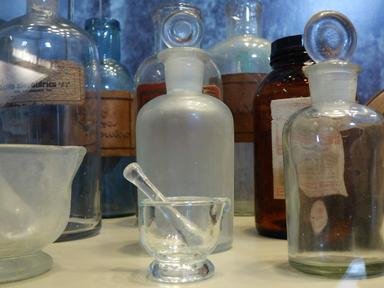Quiz Answer Key and Fun Facts
1. A German alchemist named Hennig Brand is credited with discovering phosphorus in 1669. Which bodily fluid was evaporated in the pursuit of discovering phosphorus?
2. The use of nickel, a transition metal with atomic number 28, can be traced to ancient times. Nickel was first isolated and classified as an element in 1751 by Swedish mineralogist Cronstedt, who was trying to extract which other metal from the mineral nickeline (or niccolite)?
3. Around 1600, a Polish scientist named Michael Sendivogius called this gas 'cibus vitae' (food of life). Joseph Priestley, a British clergyman, is often credited with discovering this gas, being the first to publish his findings on it in the late 18th century. What is this element Priestley referred to as 'dephlogisticated air'?
4. Though this element had been manufactured in ancient times, the discovery of this gas as an element is credited to a Scottish physician named Daniel Rutherford in 1772. What gas, the most abundant in Earth's atmosphere, did Rutherford discover by showing that the air animals breathed, after removing the carbon dioxide from it, was no longer able to burn a candle?
5. Though credit is usually distributed elsewhere, Carl Scheele was involved in the discovery of several chemical elements in the 18th century. Which gas did Scheele discover from hydrochloric acid in 1774, thinking it was an oxide?
6. The elements with atomic numbers 76 and 77 were discovered by English chemist Smithson Tennant in 1803 while he was working with samples of platinum. Which two silvery-white metals are these?
7. Sir Humphry Davy is credited with discovering two alkali metals (group 1A of the periodic table) in 1807 when he passed an electronic current through known substances (potash and soda ash or caustic soda) and observed globules of the new metals floating on the surface of these electrolyzed substances. Which two alkali metals are these?
8. French chemist Bernard Courtois discovered element 53, the heaviest of the stable halogens, in 1811. Which element, the deficiency of which can cause thyroid problems, was Courtois able to isolate from seaweed ash?
9. In 1868, a French astronomer named Jules Janssen, observing a solar eclipse, detected a yellow line in the solar spectrum that did not match any other known element. That same year, English astronomer Norman Lockyer made a similar observation observing the sun through London smog. This element was isolated independently in 1895 by astronomers Cleve, Langlet, and Ramsay from the mineral cleveite (named after the aforementioned astronomer Per Teodor Cleve). Which relatively light element is this?
10. This noble gas is abundant in Earth's atmosphere (the most common noble gas, in fact), but it wasn't discovered until 1894, when Lord Rayleigh and William Ramsay separated it from liquid air. Which element is this?
Source: Author
Rizeeve
This quiz was reviewed by FunTrivia editor
rossian before going online.
Any errors found in FunTrivia content are routinely corrected through our feedback system.
